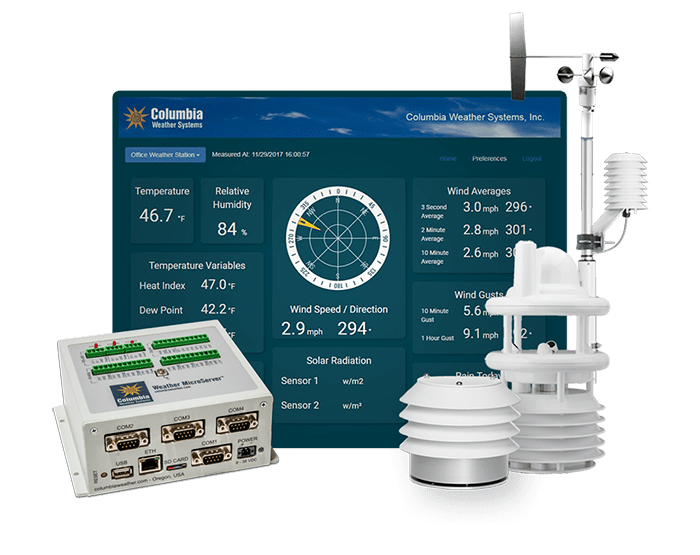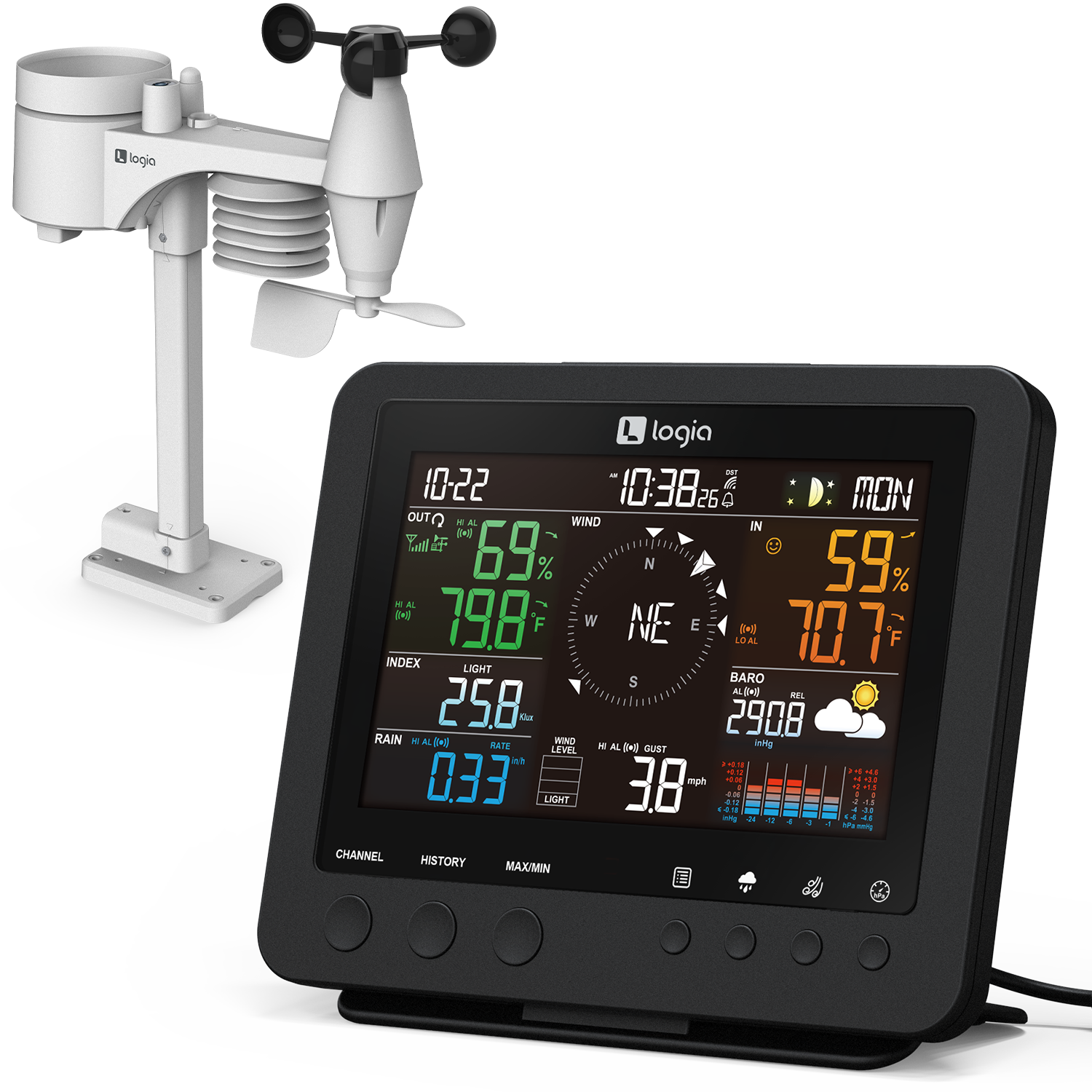Just how to Pick the Best Weather Stations for Home Use: A Comprehensive Guide
Just how to Pick the Best Weather Stations for Home Use: A Comprehensive Guide
Blog Article
Discovering the Various Kinds of Specialist Climate Terminals for Accurate Information Collection
When it comes to selecting the appropriate climate terminal for information collection, the market provides a variety of alternatives customized to different demands and setups. Let's explore the subtleties of these expert weather terminals to comprehend their distinct functionalities and establish the finest fit for particular information collection requirements.
Digital Climate Stations
In the world of atmospheric instrumentation, digital climate stations stand out as advanced tools for specific information collection and analysis. These advanced terminals are equipped with sensing units that capture a vast array of weather condition specifications such as temperature, humidity, barometric pressure, wind speed, and instructions. The information accumulated by electronic climate stations is transmitted wirelessly to a main console or a computer for real-time surveillance and evaluation.
One of the vital benefits of electronic weather condition terminals is their capability to give high-resolution data with precision and integrity. This level of accuracy is essential for different applications, including agriculture, emergency situation, research, and air travel reaction. Electronic climate terminals commonly come with software program that permits customers to visualize the data in different formats like charts and charts, facilitating less complicated interpretation and decision-making.
Wireless Weather Terminals
Building on the capacities of electronic climate terminals, wireless climate terminals provide improved benefit and flexibility in data transmission and tracking. By using wireless innovation, these weather condition stations eliminate the need for difficult wired links, permitting for easy installation in various areas. The cordless function enables real-time information tracking from remote areas, providing meteorologists and weather condition lovers with immediate access to crucial information.
Wireless weather terminals usually include sensing units that gather information on temperature, moisture, barometric pressure, wind rate, and direction. These sensing units wirelessly transmit the information to a central console or receiver, where it is processed and presented for analysis. Some progressed wireless climate stations can also connect to the web, allowing individuals to access their weather condition information from another location through computer systems or smartphones.

Prosumer Weather Stations
What differentiates Prosumer Climate Stations from typical consumer-grade weather stations? Prosumer Weather condition Stations bridge the space between professional-grade and consumer-grade tools, offering advanced functions and higher accuracy than common home weather condition terminals. These terminals are created for weather enthusiasts, amateur meteorologists, and small companies that need more accurate data than what consumer models can offer.
Prosumer Weather Stations typically consist of a bigger series of sensing units to gauge extra meteorological specifications such as UV index, leaf wetness, and soil dampness. They additionally often tend to have a greater level of sturdiness and dependability, making them appropriate for long-term outdoor usage in numerous environmental conditions.


Industrial Climate Stations
Industrial Weather condition Stations, additionally called atmospheric monitoring systems, are specialized tools made for exact and durable weather information collection in commercial setups. These stations are tailored to satisfy the unique needs of industrial operations where precise climate information is important for safety and security, efficiency, and decision-making processes.
Industrial weather condition terminals are outfitted with advanced sensors that can measure a variety of atmospheric parameters such as temperature, humidity, wind speed and direction, barometric pressure, and precipitation (Weather Stations). These stations are typically ruggedly developed to hold up against rough environmental problems normally located in commercial settings
One trick attribute of commercial climate terminals is their capability to supply real-time information surveillance and analysis. This permits commercial centers to expect weather-related dangers, optimize operations based upon climate problems, and make sure the security of workers and equipment. Additionally, industrial climate terminals can be integrated into existing commercial control systems for smooth data management and automation.
Mobile Climate Stations
In comparison to fixed industrial weather terminals, portable weather terminals use versatility and movement for on-the-go data collection in different environmental setups. These small units are made to be quickly delivered to different areas, making them suitable for field study, emergency situation reaction scenarios, agriculture, construction websites, and outdoor occasions.
Mobile climate stations typically consist of sensors for gauging parameters such as temperature level, humidity, barometric stress, wind speed, and wind instructions. Some advanced designs might also include additional sensing units for keeping an eye on rainfall, solar radiation, and UV degrees. Despite their little dimension, portable weather condition stations can providing reputable and exact data similar to helpful hints that of bigger, repaired terminals.
Among the essential benefits of mobile weather terminals is their fast release and convenience of arrangement. They can be functional within mins, permitting for rapid data collection and evaluation. In addition, these stations can be configured to send real-time information wirelessly, enabling users to keep track of and examine ecological conditions remotely. On the whole, mobile weather stations are invaluable tools for specialists needing portable, exact, and prompt weather information in diverse settings.
Conclusion
In verdict, professional climate stations come in various kinds such as digital, cordless, prosumer, commercial, and portable. By look these up recognizing the differences in between these kinds of weather terminals, individuals can make enlightened decisions to guarantee they get the most precise and reliable climate data for their objectives.
Weather condition))))
Building on the abilities of digital weather condition terminals, wireless weather condition stations offer boosted benefit and adaptability in data transmission and tracking. Some progressed wireless climate stations can even attach to the internet, allowing customers to access their weather information from another location through smart devices or computers.
Prosumer Weather condition Stations bridge the void between professional-grade and consumer-grade equipment, providing even more advanced functions and greater precision than common home weather from this source condition terminals. Weather Stations. Overall, portable weather condition terminals are important devices for experts calling for portable, accurate, and prompt weather info in varied setups
By recognizing the differences between these types of weather condition terminals, people can make informed decisions to ensure they get the most reputable and specific climate data for their purposes.
Report this page